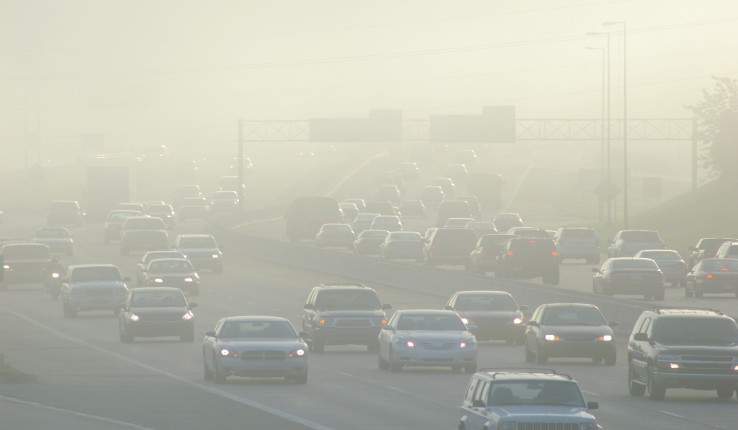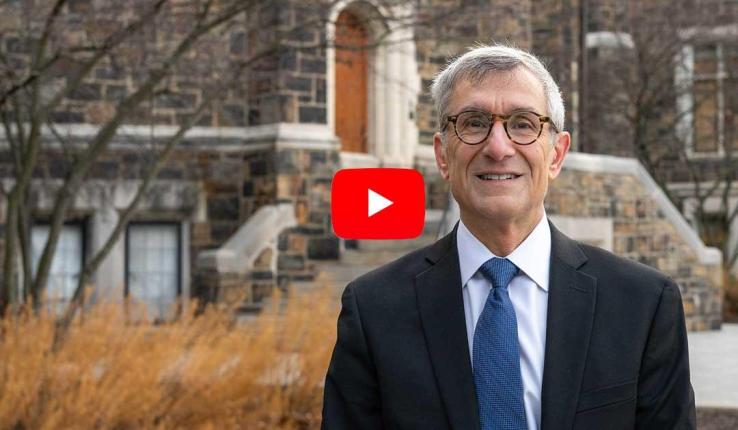Q: As reported by BBC News, a recent study (in peer review process) found that even a small increase in long-term exposure to fine particulate matter leads to a large increase in the COVID-19 death rate. The researchers looked at 3,080 counties in the U.S. and found that people who had lived in counties with long-term pollution exposure for 15-20 years had significantly higher COVID-19 mortality rates. Can you speak to why this might be the case?
A: We have known for quite some time, actually since 1948, that air pollution can not only hasten death in vulnerable people, but also increase the risks of a host of illnesses, including lung cancer, asthma exacerbation, bronchitis, chronic obstructive pulmonary disease (COPD), both Type-1 and Type-2 diabetes, congestive heart failure, preterm delivery and low birthweight, just to name a few known effects. We know that mixtures of chemicals in air exert such effects by dysregulating complex orchestration of the cells within the immune system, ultimately disrupting the underlying cellular balance. Such effects could be particularly profound and life-long if the person’s exposure to air pollution begins in the womb.
While we need more rigorous data, it is quite plausible that chronic exposure to air pollution for multiple decades could overall make you much more vulnerable to death by incurring lung injuries, promoting skewed developments of the immune systems, thereby exacerbating the aging processes of the cells underlying multiple organ systems.
Q: What have you found in your research that could shed light on the impacts of long-term pollution exposure on poor health outcomes?
If I may begin with a conclusion, our current and future generation of children are paying a price with their lives for our fossil fuel addiction. When I was a doctoral student, I was hooked on the question, ‘does cancer start in the womb?’ I had perhaps a very naïve and grand dream of testing the famous Barker’s hypothesis. In 1990, British epidemiologist David Barker hypothesized a causal relationship between slowed intrauterine growth progression, low birth weight and premature birth and an array of serious health outcomes later in life. My focus was on answering this by demonstrating that a mother’s inhalation of fossil fuel-associated air pollution programs the fetus to increase his/her susceptibility to a series of life-long consequences, starting with low birth weight, preterm delivery, asthma, and ultimately resulting in an increased risk of lung cancer.
While most children I have been following have not yet reached adulthood (to clarify their risk for cancer outcomes), early-life exposure to air pollution seems to pose clear and elevated risk on new asthma development. What is more, air pollution also seems to contribute to weight gain and obesity, particularly in girls. That is, kids who have moderate air pollution exposure seem to develop asthma alone, while those who experience high air pollution are at very elevated risk of having both asthma and obesity. As asthma is a very heterogeneous syndrome, we do not yet fully understand whether the air pollution contributes to a development of distinct diseases within the syndrome.
Q: There have been a number of reports showing improvements to air quality and other environmental indicators during this period of decreased human activity. As lockdowns are lifted, what concerns you most? In a post-pandemic world, what steps could we take, as a local and global community, to improve respiratory resilience?
A: So many aspects of our lifestyle before the pandemic were harmful not only in terms of our health, but also in terms of global climate change. For example, our routine consumption of cow meat has contributed to the present critical rise in pollutants underlying global climate change. During the lockdown, we witnessed an astounding drop in local levels of human-generated air pollution in multiple hot-spot locations. We are also seeing a marked reduction in the emissions of climate change-inducing air pollutants. These are all signs that we could use the present pain as an opportunity for collective reckoning and collaboration for a more sustainable world. Specifically, I hope to see our society restructure our city layout so that we could become less dependent on fossil fuel for transportation, home heating and other lifestyle-related consumption.






